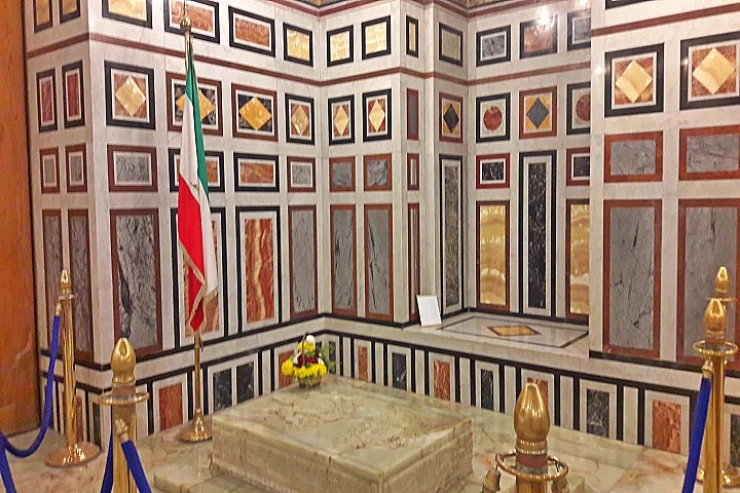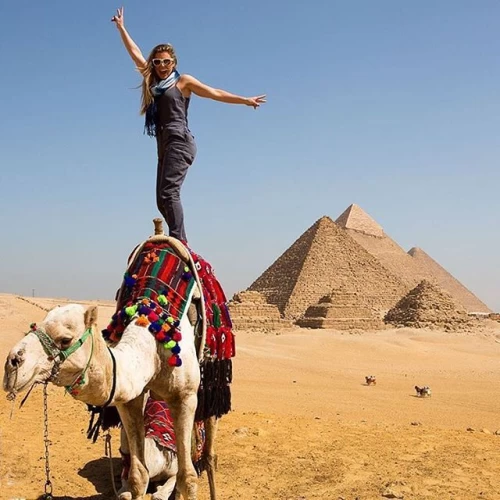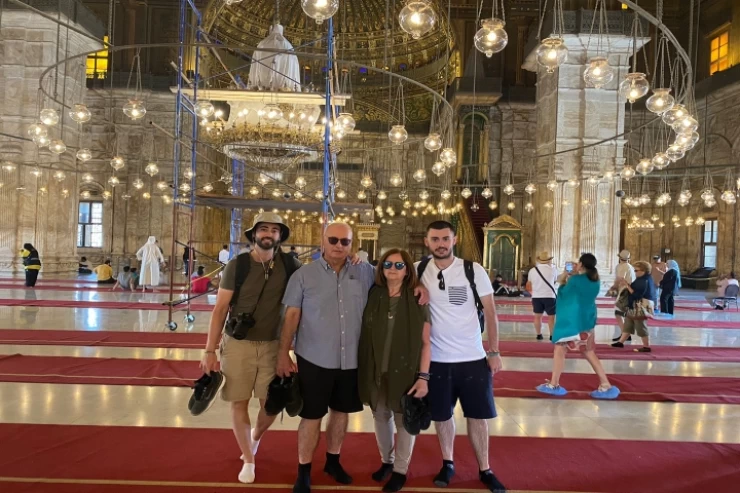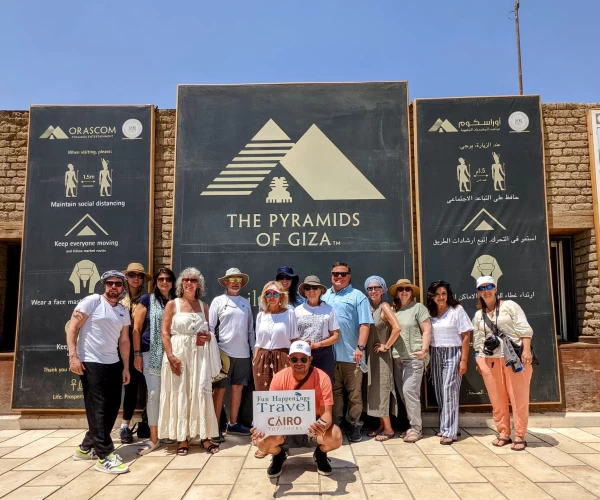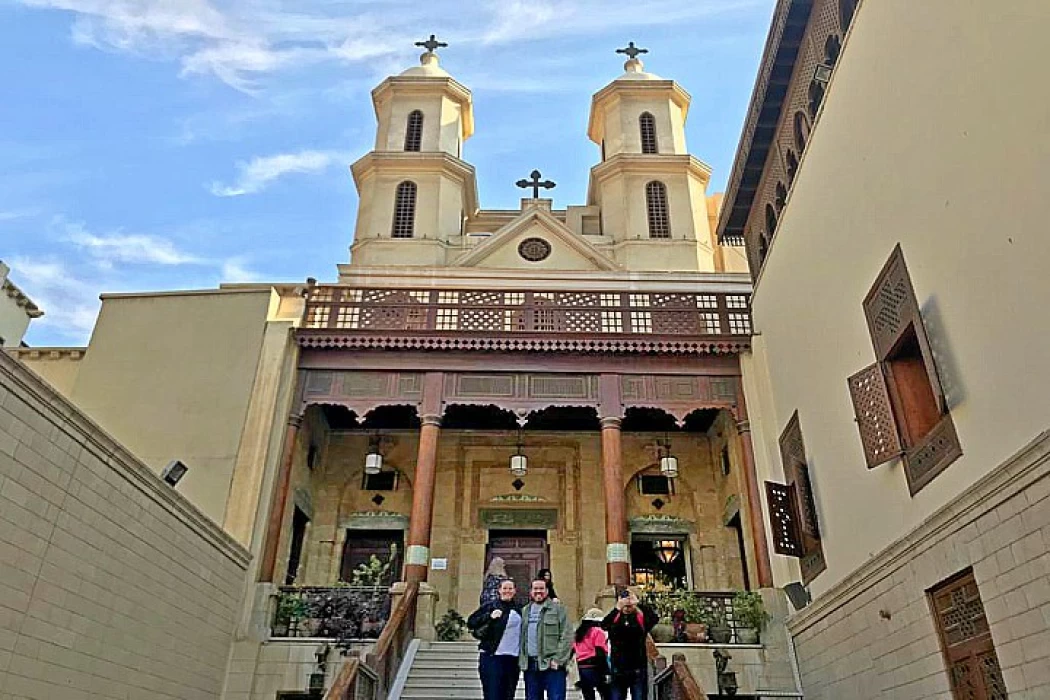
Koptisches Kairo | Altes Kairo
Koptisches Kairo Ägypten
Bis zum Beginn der islamischen Ära in Ägypten war das koptische Kairo eine echte Hochburg des Christentums in Ägypten. Trotzdem wurden die meisten derzeit sichtbaren Gebäude und Kirchen nach der Eroberung Ägyptens durch Muslime gebaut.
Das koptische Kairo umfasst die römische Festung von Babylon, das koptische Museum, die Hängende Kirche, die griechische Kirche St. George und historische Stätten sowie viele andere koptische Kirchen, was es zu einer der reichsten historischen Stätten und Aktivitäten in Kairo macht.
Altes Kairo
Es wird an die christliche Tradition geglaubt, dass die Heilige Familie dieses Gebiet besuchte und an der Stelle der Heiligen Sergius und der Bacchus-Kirche (Abu Serga) wohnte. Das koptische Kairo war bis zur islamischen Ära ein Zentrum des Christentums in Ägypten, obwohl die meisten zeitgenössischen Gebäude der Kirchen im koptischen Kairo nach der islamischen Eroberung Ägyptens im 7. Jahrhundert erbaut wurden.
Als Perser eine Festung am Nil im Norden von Memphis errichteten. Dies ist ein Beweis für die Entschädigung in der Region bereits im 6. Jahrhundert vor Christus. Die Perser bauten auch einen Kanal vom Roten Meer zum Nil (bei Fustat).
Der persische Weiler hieß Babylon und erinnerte an die antike Stadt am Euphrat. Er gewann an Bedeutung, während die nahe gelegene Stadt Memphis ebenso wie Heliopolis schwächer wurde. Babylon und seine Menschen wurden während der gesamten ptolemäischen Zeit größtenteils vergessen.
Es wird traditionell behauptet, dass die Heilige Familie das Gebiet während der Flucht nach Ägypten bereiste und um Zuflucht vor Herodes bat. Darüber hinaus wird behauptet, dass sich das Christentum in Ägypten ausbreitete, als Markus in Alexandria ankam und der erste Patriarch wurde, obwohl die Religion während der Herrschaft der Römer verborgen blieb.
Als sich die lokale Bevölkerung in Richtung einer Revolution zu organisieren begann, übernahmen die Römer die Festung und verlegten sie in die Nähe als babylonische Festung. Trajan stellte den Kanal zum Roten Meer wieder her und verursachte einen erhöhten Handel, obwohl Ägypten für die Römer ein Rückstau blieb.
Genießen Sie eine vollständige koptische Kairo-Tour, wenn Sie Touren nach Ägypten oder von unseren verschiedenen Touren ab Kairo planen.
Unter den Römern gelang es Markus und seinen mächtigen Anhängern, eine reichliche Teilung der Bevölkerung vom atheistischen Glauben zum Christentum zu führen. Als die christlichen Gemeinden in Ägypten immer mehr wuchsen, wurden sie von den Römern unter Kaiser Diokletian um 300 n. Chr.
Ins Exil gezwungen, und der Missbrauch wurde nach dem Edikt von Mailand fortgesetzt, das religiöse Toleranz proklamierte. Die koptische Kirche wurde später von der Kirche der Römer und Byzantiner isoliert. Nach der Herrschaft von Arcadius (395-408) wurden im alten Kairo eine Reihe von Kirchen gegründet. In den frühen Jahren der arabischen Herrschaft durften die Kopten mehrere Kirchen im alten Festungsgebiet des alten Kairo bauen.
Im koptischen Kairo wurde in 1115 Jahren die Ben-Ezra-Synagoge in einer ehemaligen koptischen Kirche errichtet, die im 8. Jahrhundert erbaut wurde. Die Kopten mussten es verkaufen, um Geld für die Zahlung von Steuern an Ibn Tulun zu sammeln.
Das koptische Kairo war im 11. Jahrhundert n. Chr. Gastgeber des Sitzes des koptisch-orthodoxen Papstes von Alexandria, der sich historisch in Alexandria befindet. Als die Justizbehörden nach der arabischen Invasion in Ägypten während der Amtszeit von Papst Christodolos von Alexandria nach Kairo zogen, zeigte Kairo 1047 in der Hängenden Kirche den festen und wirklichen Wohnsitz des koptischen Papstes im koptischen Kairo.
Das koptische Museum wurde 1910 gegründet und beherbergt die weltweit wichtigsten Beispiele koptischer Kunst.
Kirchen:
Marienkirche (Haret Elroum)
Heilige Mercurius-Kirche
Heilige Sergius und Bacchus Kirche (Abu Serga)
Die hängende Kirche
Kirche der Heiligen Jungfrau (Babylon El-Darag)
St. Barbara Kirche
Die Kirche des Heiligen Menas
Nonnenkloster und Kirche St. George (Kairo)
Kloster und Kirche St. George (griechisch-orthodox)
Die Wunder des Tourismus auf ägyptischem Boden sind die Früchte, die Cairo Top Tours durch seine Agenten vor Ort und/oder online zu Ihnen bringt.
Wenn Sie mehr über die Stadt Gizeh wissen und sehen möchten, wie sie aussieht, finden Sie hier viele Informationen und Bilder von der Hängenden Kirche. Sie wird Ihnen helfen, mehr über Gizeh zu erfahren und darüber, was dort in der Vergangenheit geschah.
Coptic Cairo is located in the center of the vast metropolis of Egypt. As the names go, Coptic Cairo is the district replete with history and antiquities—more so, stories of this country’s prominence in Christianity. The district popularly referred to as Old Cairo is one of the oldest parts of the city and is one of the best illustrations of the great melting pot that is the country’s history. People come here to appreciate the mixtures of obvious architectures of all religions—Christianity, Judaism, and Islam. This is to explain more what Coptic Cairo has to offer any tourist who wishes to visit Egypt and not just to see the Pyramids.
A Walk Through History: The Origins of Coptic Cairo
Coptic Cairo is the memory of the period when the settlement was referred to as Babylon the Great, the Roman Empire's fortress on the Nile River. As early as the 4th century, this region became a great hub for Christianity and scholarship. The transformation of this area into a religious center is attributed to the advancement of Christianity in Egypt which can be dated back to the coming of St. Mark in Alexandria in about 42 AD. Christianity expanded, leading to the construction of many churches within Egypt, with Coptic Cairo being the first.
Copt is a name that is given to the Christians from Egypt who belong to the Coptic Orthodox Church, whose doctrine is considered to have been founded by the apostle Mark. Coptic Cairo is a time waiting to be unearthed since it harbors many ancient churches, convents, and other buildings vital for the study of the growth of Christianity in Egypt and the area around it.
1. The Hanging Church (Saint Virgin Mary's Coptic Orthodox Church)
The Hanging Church, which gets its name from the position it sits in, on the upside of the Roman gatehouse of Babylon, is one of the most remarkable and magnificent landmarks in Coptic Cairo. Constructed in the third century, the church is one of the ancient churches in Egypt and is very dear to the Coptic community. The interior design of the church is unique, as it has a wooden ceiling that is crafted like Noah’s Ark, the walls are beautifully detailed, and there is an iconostasis. Visitors are treated to 110 icons depicting biblical scenes and Coptic saints, the oldest of which dates to the 8th century.
2. The Church of Sts. Sergius and Bacchus
Another olden-era church targets modern young and old Christians and lots of tourists, as it is said to have been erected in the cave where the Holy Family hid by the time they were headed to Egypt. The Church of St. Sergius and Bacchus has a mystical aura and simple beauty, which makes one feel immersed in the time of early Christians in a very strong way. The crypt where the Holy Family is said to have taken shelter is accessible to visitors, which provides a striking contrast between the ancient stories of Egypt and the Bible.
3. The Ben Ezra Synagogue
The Ben Ezra Synagogue is one of the most ancient Jewish worship centers in Egypt and is living proof that diverse religious communities may peacefully co-exist in the country. Local tradition maintains that the very synagogue is built on the ground where the Pharaoh`s daughter discovered Moses in the bulrushes. Once a Coptic church, it was turned into one in the 9th century and is an exquisite example of architectural design, comprising carved wooden panels, lovely murals on ceilings, and other historic pieces.
4. The Coptic Museum
Coptic Museum is a must-visit place if one feels like exploring more on the history of Coptic Christianity. Established in 1910, it boasts the largest collection of artifacts and artwork belonging to Copts in the world, including decorated books, clothes, and Coptic icons. This museum also opens up the world to many imaginations about the lives of early Egyptians—Christians in particular—their arts, as well as Coptic art that evolved in different climates interacting with other cultures.
5. The Monastery and Church of St. George
St. George's Church is an exceptional place, as it is one of the rare surviving round-shaped churches in the Middle East. The Greek Orthodox Church here was believed to have been erected in the 10th century; however, some sources even suggest that the primary edifice was erected in the sixth century. The monastery and church are dedicated to Saint George, who is one of the most revered and cherished saints in Christianity, and they still serve the local Christians as places of worship. Also, every April, there is a feast devoted to Saint George, which welcomes many pilgrims all around the year.
On its own, Coptic Cairo is more than a place of worship; it is a representation of the multilayered legacy of Egypt. The area is a perfect example where different practices, traditions, and beliefs, including Christianity, Judaism, and Islam, have interacted within a small radius for centuries. A church, a mosque, and a synagogue are often located within close range of each other, which hints at the existence of wonderful stories about these places and the people in them.
Coptic Cairo illustrates well the enduring spirit and flexible nature of the Copts, who have been able to practice their faith and customs even in the face of changes that have rocked Egypt over the years. This is not just a tourist attraction; it is a zone with schools, markets, and even houses, which maintains a character that is dynamic and expanding.
Dress Appropriately: As a lot of the places of interest are of religious significance, it is important that one dress appropriately. This implies that one should wear clothes that cover their shoulders and knees.
Management of Time: Coptic Cairo is an extensive area with lots of things to see, and many of the places close by early evening. Browse around every place for a couple of hours and enjoy the ambiance without the pressure of time in the views.
Photography: One or two of their chapels and the Coptic Museum may not allow the taking of pictures; hence, it is advisable to seek the courtesy of asking before taking any pictures.
Hire a Professional Guide: Every destination has its own story and history, and every traveler ought to understand that, so it’s better to hire professionals. Their service will be needed as they will explain things like the signs, customs, and stories that cannot be seen or heard by ordinary visitors.







